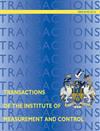基于改进人工势场法的自动驾驶汽车分层无碰撞轨迹规划
IF 1.9
4区 计算机科学
Q3 AUTOMATION & CONTROL SYSTEMS
Transactions of the Institute of Measurement and Control
Pub Date : 2023-07-25
DOI:10.1177/01423312231186684
引用次数: 2
摘要
为了使自动驾驶汽车能够生成平滑无碰撞的轨迹,并提高其在结构化道路上的驾驶性能,本文提出了一种基于改进的人工势场方法的分层轨迹规划算法。为了提高算法在复杂场景中的适用性,建立了Frenet坐标系来解决这些限制。首先,将安全距离模型应用于改进的人工势场方法的风险评估。然后,进行了分层求解,并结合人工势场方法求解了道路可解凸空间和粗路径解。在此基础上,建立了势场项和光滑项代价函数,并使用序列二次规划算法求解满足安全性和光滑性要求的精确路径。分层规划通过快速确定凸空间的边界来缩短求解时间。最后,在速度规划中,为了考虑乘客的舒适性和安全性,通过考虑车辆的动态约束来求解速度曲线。在不同的仿真场景中测试了该算法对静态和动态障碍物的避障效果。仿真实验结果表明,该算法能够成功实现复杂结构道路的避障。本文章由计算机程序翻译,如有差异,请以英文原文为准。
Hierarchical collision-free trajectory planning for autonomous vehicles based on improved artificial potential field method
To enable autonomous vehicles to generate smooth and collision-free trajectories and improve their driving performance on structured roads, this paper proposes a hierarchical trajectory planning algorithm based on an improved artificial potential field method. To improve the applicability of the algorithm to complex scenarios, the Frenet coordinate system was established to address these limitations. First, the safety distance model is applied to the risk assessment of the improved artificial potential field method. Then, the hierarchical solution is carried out, and the road solvable convex space and the rough path solution are solved by combining the artificial potential field method. On this basis, the potential field term and the smoothing term cost function are established, and the sequential quadratic programming (SQP) algorithm is used to solve the exact path that meets the requirements of safety and smoothness. Hierarchical planning shortens the solution time by quickly determining the bounds of the convex space. Finally, in the speed planning, in order to take into account the comfort and safety of the occupants, the speed curve is solved by considering the dynamic constraints of the vehicle. The obstacle avoidance effects of the algorithm on static and dynamic obstacles are tested in different simulation scenarios. The results of the simulation experiment show that the proposed algorithm can successfully achieve obstacle avoidance on complex structured roads.
求助全文
通过发布文献求助,成功后即可免费获取论文全文。
去求助
来源期刊
CiteScore
4.10
自引率
16.70%
发文量
203
审稿时长
3.4 months
期刊介绍:
Transactions of the Institute of Measurement and Control is a fully peer-reviewed international journal. The journal covers all areas of applications in instrumentation and control. Its scope encompasses cutting-edge research and development, education and industrial applications.

 求助内容:
求助内容: 应助结果提醒方式:
应助结果提醒方式:


